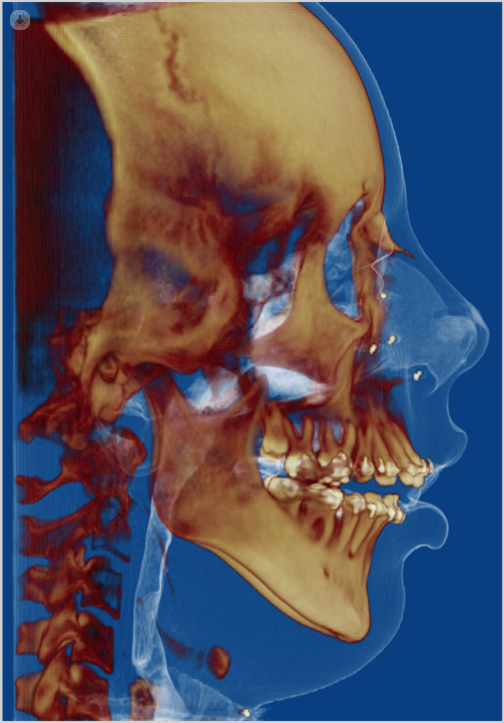Multidisciplinary treatment Orthodontics and orthognathic surgery
Written by: Orthognathic surgery is a subspecialty of the maxillofacial surgery combined with orthodontics to correct malformations of the jaw providing a good chewing function and correct facial aesthetics.
Orthognathic surgery is a subspecialty of the maxillofacial surgery combined with orthodontics to correct malformations of the jaw providing a good chewing function and correct facial aesthetics.
The dental-facial deformities occur when one or more bones that make up the face does not correspond to each other in size, shape and / or position, providing a dental abnormal growth, possible facial asymmetries and bad snaps, affecting masticatory function and even They can cause muscle and joint pain.
Many of these changes take place during the age of growth and usually stabilize in adulthood.
Any facial bone can be affected by these changes, leading to a lack of functional and aesthetic harmony of the face that may influence the personality, even influence the character and self-esteem of the person.
Where this technique is used
Orthognathic surgery is intended for adult patients who have completed growth completely, with severe skeletal problems that prevent them chew or wish to improve their facial appearance. The objective of orthognathic surgery is to place the bones in proper position, restore masticatory function and improve facial aesthetics after the initial or pre-surgical orthodontic treatment performed by the orthodontist. There are conditions that may indicate the need for orthognathic surgery, such as difficulty chewing, TMJ chronic pain, chronic mouth breathing and dry mouth, sleep apnea, undershot jaw, or disproportion between the facial thirds and facial imbalance.
Benefits and Risks
Orthognathic surgery moves your teeth and jaws into more balanced, functional and healthy positions on other techniques. In addition to improved function and bite, many patients manage to improve their facial appearance, breathing and speaking. The results of surgery can have a very positive effect on many aspects of life, and probably esteem and confidence increase greatly. The risks of surgery may include: inflammation, temporary numbness or tingling, or a risk of infection common in all operations. The limited movement of the jaw is another possible problem, so it is very important to follow the exercises proposed by the orthodontist after surgery.


